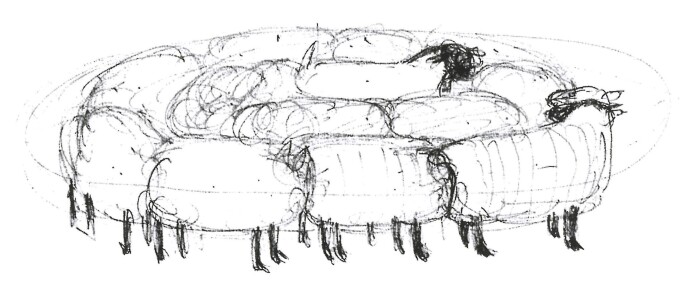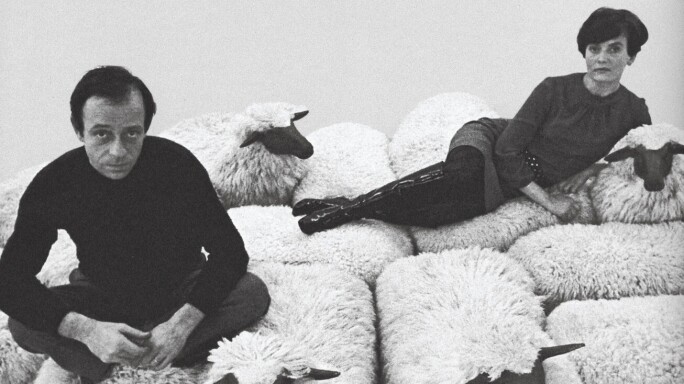The collection of Michelle Smith comprises two early examples of the iconic Mouton de Laine (lots 6 and 71), executed in 1977 and 1987 respectively. The model in wool is the earliest sheep design conceived by the artist and has since become synonymous with both style and irreverence in the worlds of art and design.

First exhibited in 1965 at the Salon de la Jeune Peinture in Paris, François-Xavier Lalanne’s Mouton de Laine (which literally translates as “Wool Sheep”) began with the French artist wanting to make a statement with something “immodest and slightly embarrassing.” When Lalanne unveiled his first flock over five decades ago at the Salon, the twenty-four functional pieces made of sheepskin and bronze made a significant impression on the public. The critic Otto Hahn raved about the exhibition in 1966 in the French journal L’Express, noting that nothing exceptional had been seen there except for Lalanne’s work, which he discussed as furniture: “The Salon de la Jeune Peinture nevertheless holds one surprise: François-Xavier Lalanne’s chairs… he has brought an entire flock of sheep. It is the most amazing thing in the show.”

Motivating the conception of his sheep furniture was Lalanne’s desire to bring country life to Paris, a city then on the verge of the May 1968 movement, which was about to shake its conservative core. Certainly a large part of the Surrealist imagery involved mocking conformity and playfully critiquing the bourgeoisie, whose herd mentality is signified here by a flock of sheep following each other blindly. The success of this first presentation prompted Lalanne to create additional flocks of sheepskin moutons throughout the 1970s, specially commissioned for private and esteemed clients such as Alexandre Iolas, Gunther Sachs and the Treilles family.
Many variations of the theme ensued: in the late 1960s and 1970s, Lalanne created a limited number of sheep entirely made with black wool. Later on, and in an effort to best equip the sheep to outdoor settings where they were often installed, Lalanne replaced the sheepskin with epoxy stone, giving birth to the series known as the Moutons de Pierre (or “Stone Sheep”). The Mouton Transhumant, a sleeker version of the sheep with a discernibly longer neck, introduced the ewe to the herd, which he further expanded in 1994 with the creation of the Nouveau Moutons (“New Sheep”) series. In addition to ewes, the 1994 series included brebis, béliers and agneaux as additions to the sheep family. Rare iterations of the sheep form were created and are particularly scarce, including the patinated bronze Béliers in the collection of Michelle Smith (lots 120 and 121).

Spanning over five decades, the Lalanne Moutons have become a signature piece for art collectors and design connoisseurs alike. These sheep represent just a small fraction of a monumental and tremendous œuvre that revolves around the creation of an imaginary bestiary shared with the artist’s lifelong partner and closest artistic collaborator, Claude Lalanne. Existing at the frontier between sculpture and furniture, Lalanne’s many Moutons question the traditional boundaries separating art from furniture, and provide us with new paradigms to reframe this century-long dichotomy. Playful, elegant and timeless, the Mouton de Laine still unequivocally resonates with modern audiences today and constitutes one of the most iconic creations of 20th Century French design.